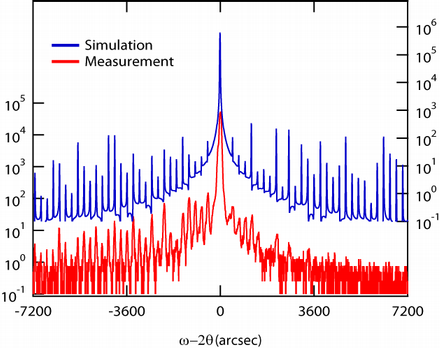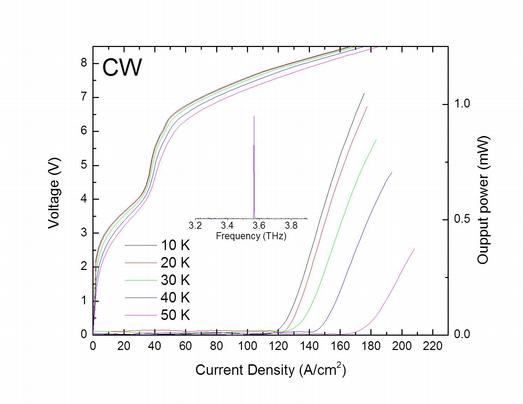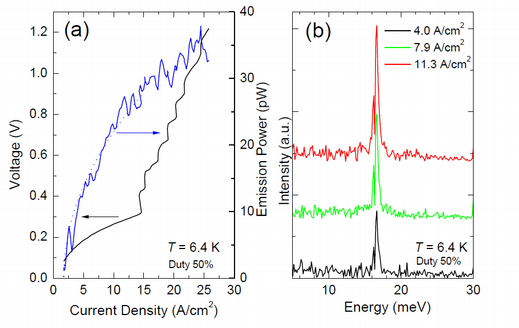Material Systems
Despite the enormous progress in the development of the Terahertz quantum cascade lasers (THz QCL), there are still several issues that need to be solved before the THz QCL become mature technology for the possible industrial applications. One of them is the low operating temperature that is currently limited to cryogenic temperatures. Trying to improve the temperature performances of THz QCL by changing the base heterostructure material has lead to two opposite trends. On one hand, materials with a large optical phonon (LO) energy are of a great interest because they are expected to decrease the thermally activated LO phonon scattering rate which is believed to be a factor limiting operation temperature of present THz QCLs. A group-III nitride is a good candidate because of the large optical phonon energy ( ≈ 90 meV) compared to the one of GaAs ( ≈ 36 meV). On the other hand, materials with a small effective mass are attractive because they exhibit a large optical gain coefficient, as a small effective mass leads to a large oscillator strength and a small non-radiative scattering rate. InGaAs and InAs are suited materials for this purpose because of the smaller effective mass (0.043m0 for InGaAs and 0.023m0 for InAs) compared to the one of GaAs (0.067m0). Here we are studying on these two material systems: (1) InGaAs with ternary AlInAs and quaternary AlInGaAs barriers grown on InP substrate, and (2) InAs with quaternary AlGaAsSb barriers grown on InAs substrate.
We used four quantum wells bound-to-continuum structures in the active region, which makes it possible to inject electrons into the upper laser state with the higher selectivity. Our THz QCL based on InGaAs with ternary AlInAs barrier operated at 105 K in pulsed mode with 4 mW of optical power at helium temperatures [1]. These lasers operated also in continuous wave mode. We have recently succeeded in lasing of THz QCLs based on InGaAs with quaternary AlInGaAs barriers [2]. We are currently optimizing active layer structures and investigating carrier scattering processes in the active region which limits current laser performance. For InAs we established molecular beam epitaxy growth technique for strain compensation. The grown layer shows a high structural quality with the lattice constant matched to the substrate. Also thin AlSb/AlAs barrier on InAs was characterized by intersubband absorption measurement, which is important for band structure calculation in the active region [3]. We have observed a very narrow intersubband THz electroluminescence (Linewidth: 0.6 meV) from InAs single quantum well, exhibiting a potential for THz QCL material [4].

References
[1] M. Fischer, G. Scalari, K. Celebi, M. Amanti, Ch. Walther, M. Beck, and J. Faist, “Scattering processes in terahertz InGaAs/InAlAs quantum cascade lasers”, Applied Physics Letter 97, 221114 (2010) - external page DOI
[2] K. Ohtani, M. Beck, G. Scalari, and J. Faist, “InP Terahertz quantum cascade lasers based on quaternary AlInGaAs barriers” - external page DOI
[3] F. Castellano, K. Ohtani, L. Nevou, and J. Faist, “Characterization of thin AlSb/AlAs barriers on InAs by mid-infrared intersubband absorption measurements”, Applied Physics Letter 102, 032103 (2013) - external page DOI
[4] K. Ohtani, M. Fischer, G. Scalari, M. Beck, and J. Faist, “Terahertz intersubband electroluminescence from InAs quantum cascade light emitting structures”, Applied Physics Letter 102, 141113 (2013) - external page DOI


